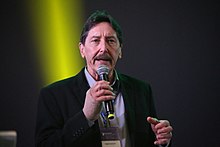
Smart growth is an urban planning and transportation theory that concentrates growth in compact walkable urban centers to avoid sprawl. It also advocates compact, transit-oriented, walkable, bicycle-friendly land use, including neighborhood schools, complete streets, and mixed-use development with a range of housing choices. The term "smart growth" is particularly used in North America. In Europe and particularly the UK, the terms "compact city", "urban densification" or "urban intensification" have often been used to describe similar concepts, which have influenced government planning policies in the UK, the Netherlands and several other European countries.

Transport economics is a branch of economics founded in 1959 by American economist John R. Meyer that deals with the allocation of resources within the transport sector. It has strong links to civil engineering. Transport economics differs from some other branches of economics in that the assumption of a spaceless, instantaneous economy does not hold. People and goods flow over networks at certain speeds. Demands peak. Advance ticket purchase is often induced by lower fares. The networks themselves may or may not be competitive. A single trip may require the bundling of services provided by several firms, agencies and modes.
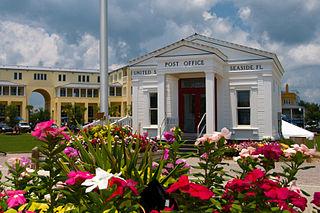
New Urbanism is an urban design movement that promotes environmentally friendly habits by creating walkable neighbourhoods containing a wide range of housing and job types. It arose in the United States in the early 1980s, and has gradually influenced many aspects of real estate development, urban planning, and municipal land-use strategies. New Urbanism attempts to address the ills associated with urban sprawl and post-Second World War suburban development.

Urban sprawl is defined as "the spreading of urban developments on undeveloped land near a more or less densely populated city". Urban sprawl has been described as the unrestricted growth in many urban areas of housing, commercial development, and roads over large expanses of land, with little concern for very dense urban planning. Sometimes the urban areas described as the most "sprawling" are the most densely populated. In addition to describing a special form of urbanization, the term also relates to the social and environmental consequences associated with this development. In modern times some suburban areas described as "sprawl" have less detached housing and higher density than the nearby core city. Medieval suburbs suffered from the loss of protection of city walls, before the advent of industrial warfare. Modern disadvantages and costs include increased travel time, transport costs, pollution, and destruction of the countryside. The revenue for building and maintaining urban infrastructure in these areas are gained mostly through property and sales taxes. As most jobs in the US are now located in suburbs generating much of the revenue, although a lack of growth will require higher tax rates.
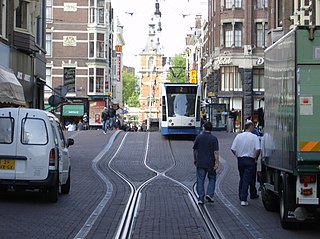
In urban planning, transit-oriented development (TOD) is a type of urban development that maximizes the amount of residential, business and leisure space within walking distance of public transport. It promotes a symbiotic relationship between dense, compact urban form and public transport use. In doing so, TOD aims to increase public transport ridership by reducing the use of private cars and by promoting sustainable urban growth.

The O-Bahn Busway is a guided busway that is part of the bus rapid transit system servicing the northeastern suburbs of Adelaide, South Australia. The O-Bahn system was conceived by Daimler-Benz to enable buses to avoid traffic congestion by sharing tram tunnels in the German city of Essen.

Suburbanization (AE), or suburbanisation (BE), is a population shift from historic core cities or rural areas into suburbs, resulting in the formation of (sub)urban sprawl. As a consequence of the movement of households and businesses away from city centers, low-density, peripheral urban areas grow.

A transit village is a pedestrian-friendly mixed-use district or neighborhood oriented around the station of a high-quality transit system, such as rail or B.R.T. Often a civic square of public space abuts the train station, functioning as the hub or centerpiece of the surrounding community and encouraging social interaction. While mainly residential in nature, many transit villages offer convenience retail and services to residents heading to and from train stations.

Car dependency is the concept that some city layouts cause cars to be favoured over alternate forms of transportation, such as bicycles, public transit, and walking.
Urban consolidation describes the policy of constraining further development and population growth to within the boundaries of preexisting urban areas rather than expanding outward into suburban areas. Urban consolidation seeks to increase the population density of a given urban area by expanding upward, redeveloping preexisting buildings and lots, and constructing new facilities in available spaces. It is theorized that discouraging urban sprawl and encouraging further development of housing units in preexisting urban areas will lead to a net gain in social and economic prosperity.

In urban planning, walkability is the accessibility of amenities by foot. It is based on the idea that urban spaces should be more than just transport corridors designed for maximum vehicle throughput. Instead, it should be relatively complete livable spaces that serve a variety of uses, users, and transportation modes and reduce the need for cars for travel.

Rapid transit or mass rapid transit (MRT), also known as heavy rail or metro, is a type of high-capacity public transport that is generally built in urban areas. A rapid transit system that primarily or traditionally runs below the surface may be called a subway, tube, or underground. Unlike buses or trams, rapid transit systems are railways, usually electric, that operate on an exclusive right-of-way, which cannot be accessed by pedestrians or other vehicles. They are often grade-separated in tunnels or on elevated railways.
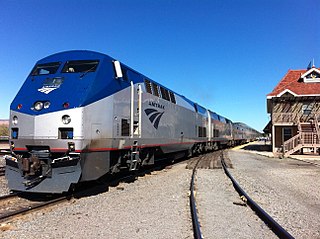
The United States is serviced by a wide array of public transportation, including various forms of bus, rail, ferry, and sometimes, airline services. Most established public transit systems are located in central, urban areas where there is enough density and public demand to require public transportation. In more auto-centric suburban localities, public transit is normally, but not always, less frequent and less common. Most public transit services in the United States are either national, regional/commuter, or local, depending on the type of service. Sometimes "public transportation" in the United States is an umbrella term used synonymously with "alternative transportation", meaning any form of mobility that excludes driving alone by automobile. This can sometimes include carpooling, vanpooling, on-demand mobility, infrastructure that is oriented toward bicycles, and paratransit service. There is public transit service in most US cities.

Active mobility, soft mobility, active travel, active transport or active transportation is the transport of people or goods, through non-motorized means, based around human physical activity. The best-known forms of active mobility are walking and cycling, though other modes include running, rowing, skateboarding, kick scooters and roller skates. Due to its prevalence, cycling is sometimes considered separately from the other forms of active mobility.

GoCar is the first Carsharing service in Ireland. GoCar members can book cars online or via the app for as little as an hour, then unlock with their phone or GoCard; the keys are in the car, with fuel, insurance and city parking all included. Rates start from €10 per hour, with 50 km of driving included on each trip. GoCar now has over 10,000 members and operates a fleet of over 300 cars across 200+ locations in Ireland. Drivers can visit GoCar.ie to request a GoCar in their community. It launched in Cork in September 2008, with the support of Cork City Council as a pilot scheme. Cork City Council gave GoCar use of 3 car parking locations in Cork City as part of a wider pilot scheme.

A Transit metropolis is an urbanized region with high-quality public transportation services and settlement patterns that are conducive to riding public transit. While Transit villages and Transit-oriented developments (TODs) focus on creating compact, mixed-use neighborhoods around rail stations, transit metropolises represent a regional constellation of TODs that benefit from having both trip origins and destinations oriented to public transport stations. In an effort to reduce mounting traffic congestion problems and improve environmental conditions, a number of Chinese mega-cities, including Beijing and Shenzhen, have embraced the transit metropolis model for guiding urban growth and public-transport investment decisions.

Urban planning, also known as town planning, city planning, regional planning, or rural planning in specific contexts, is a technical and political process that is focused on the development and design of land use and the built environment, including air, water, and the infrastructure passing into and out of urban areas, such as transportation, communications, and distribution networks and their accessibility. Traditionally, urban planning followed a top-down approach in master planning the physical layout of human settlements. The primary concern was the public welfare, which included considerations of efficiency, sanitation, protection and use of the environment, as well as effects of the master plans on the social and economic activities. Over time, urban planning has adopted a focus on the social and environmental bottom lines that focus on planning as a tool to improve the health and well-being of people while maintaining sustainability standards. Sustainable development was added as one of the main goals of all planning endeavors in the late 20th century when the detrimental economic and the environmental impacts of the previous models of planning had become apparent. Similarly, in the early 21st century, Jane Jacobs's writings on legal and political perspectives to emphasize the interests of residents, businesses and communities effectively influenced urban planners to take into broader consideration of resident experiences and needs while planning.
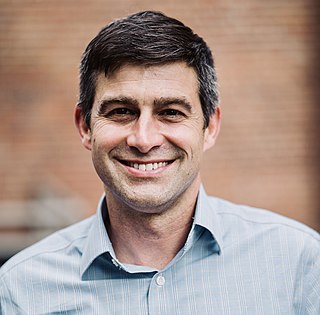
William Warren Riggs or "Billy" Riggs is an author, city planner, entrepreneur and professor of Management at University of San Francisco, and an international expert in the areas of sustainable transport, technology, urban development and the future of cities. He is the author of the book, End of the Road: Reimagining the Street as the Heart of the City and Disruptive Transport: Driverless Cars, Transport Innovation and the Sustainable City of Tomorrow. He has worked as a professional planner, in venture capital for Just Business and a strategic consultant for various technology firms and startups. He also has experience as a successful recording artist and music producer, having worked on award-winning projects with Frances England, Gabriel Riggs and Carlos Villarreal.
Fairview–Pointe-Claire is a Réseau express métropolitain (REM) station under construction in Pointe-Claire, Quebec, Canada. It will be operated by CDPQ Infra and serves as a station of the Anse-à-l'Orme branch of the REM, with an expected opening in the fourth quarter of 2024.
Reid H. Ewing is an American urban planner and distinguished professor of city and metropolitan planning and a distinguished research chair for resilient places at the University of Utah. Ewing is the director of the Metropolitan Research Center and he a long-time columnist for the planning magazine, Planning Research You Can Use.
